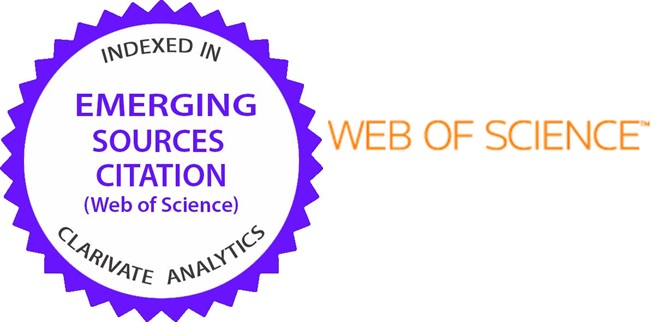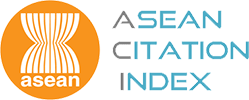Analyzing Determinants of Islamic Stock Market Performance in Indonesia and Malaysia
DOI:
https://doi.org/10.31436/ijema.v33i1.1411Keywords:
Islamic stock performance, Monetary policy objectives, Global indicatorsAbstract
Indonesia has higher volatility in Islamic stock market compared to Malaysia. As volatility of each market is derived from its Islamic stock performance, the goal of this paper is to analyze determinant factors of Islamic stock market performance in Indonesia and Malaysia. Using inflation and exchange rate as monetary policy objectives (MPO) and VIX (investors fear and market volatility), and gold price as global indicators for independent variables, ARDL bound test is performed with monthly Indonesia and Malaysia data. Indonesia data are gathered from December 1994 to February 2023, whereas Malaysia data are from January 2010 to February 2023. The results show that inflation and exchange rate become the main driving force of Islamic stock market performance in Indonesia in the long run, while the exchange rate is true for Malaysia. In the short run, inflation become the driving factor of Islamic stock performance in Indonesia and Malaysia. This paper also finds that gold investment able to become safe-haven asset in Indonesia in short and long run, while in Malaysia gold investment can be a safe-haven asset in the short run only. This paper also finds that VIX do not have any significant result only in Indonesia in short run. Implication of these results are the essential role of Central bank of Indonesia to achieve its inflation targeting, and the important role to rise capital gain tax.
References
Acaravci, S.K., A. Acaravci, and I. Ozturk. “Stock Returns and Inflation Nexus in Turkey: Evidence from ARDL Bounds Testing Approach.” Economic Computation and Economic, content 3/2011 (2011): 143-54.
Ahmadi, S., and A. Soroushyar. “Monetary Policies and Islamic Mutual Fund Flows: Evidence from Islamic Republic of Iran.” Journal of Islamic Accounting and Business Research (2022). 1253-267.
Akalpler, E., and D. Duhok. “Does Monetary Policy Affect Economic Growth: Evidence from Malaysia.” Journal of Economic and Administrative Sciences 34, no. 1 (2018): 2-20.
Akmal, M.S. “Stock Returns and Inflation: An ARDL Econometric Investigation Utilizing Pakistani Data.” Pakistan Economic and Social Review 45, no. 1 (2007): 89-105.
AlKhazali, O., H. Lean, and T. Zoubi. “The Size Anomaly in Islamic Stock Indices: A Stochastic Dominance Approach.” International Journal of Financial Studies 10, no. 102 (2022): 1-14.
Arfaoui, M., and A.B. Rejeb. “Modeling the Volatility of DJIM Equity Indices: A Fundamental Analysis Using Quantile Regression.” International Journal of Islami and Middle Eastern Finance and Management 14, no. 3 (2021): 482-505.
Atri, H., S. Kouki, and M. Gallali. “The Impact of COVID-19 News, Panic and Media Coverage on the Oil and Gold Prices: An ARDL Approach.” Resources Policy 72 (2021): 1-11.
Ayedh, A., A. Echchabi, M. Battour, and M. Omar. “Malaysian Muslim Investors’ Behaviour Towards The Blockchain-Based Bitcoin Blockchain-Based Bitcoin.” Journal of Islamic Marketing (2021): 690-704.
Aziz, T., J. Marwat, S. Mustafa, and V. Kumar. “Impact of Economic Policy Uncertainty and Macroeconomic Factors on Stock Market Volatility: Evidence from Islamic Indices.” Journal of Asian Finance, Economics and Business 7, no. 12 (2020): 683-92.
Bacha, Obiyathulla Ismath, and Abbas Mirakhor. Islamic Capital Markets: A Comparative Approach. Solaris South Tower: John Wiley & Sons, 2013.
Bahloul, S., M. Mroua, and N. Naifar. “International Journal of Applied Econometrics and Quantitative Studies Islamic Index Returns Under Regime Switching.” Borsa Istanbul Review 17, no. 1 (2017): 62-74.
Bahmani-Oskooee, M., and T. Kanitpong. “Do Exchange Rate Changes Have Symmetric or Asymmetric Effects on the Trade Balances of Asian Countries?” Applied Economics 49, no. 46 (2017): 1-11.
Bank Indonesia (n.d). Monetary Policy Objectives. https://www.bi.go.id/en/fungsi-utama/moneter/default.aspx
Bist, J.P., and N.B. Bista. “Finance-Growth Nexus in Nepal: An Application of the ARDL Approach in the Presence of Structural Breaks.” VIKALPA The Journal for Decision Makers 43, no. 4 (2018): 236-49.
Blanchard, Olivier. Macroeconomics (8th Edition). Essex: Pearson Education Limited, 2021.
Bodie, Zvi, Alex Kane, and Alan J. Marcus. Investments. New York: McGraw-Hill, 2023.
Bursa Malaysia. (n.d). Understanding Indices. bursamalaysia.com. https://tinyurl.com/BMalaysia
Chirwa, T.G., and N.M. Odhiambo. “Determinants of Gold Price Movements: An Empirical Investigation in the Presence of Multiple Structural Breaks.” Resources Policy 69 (2020): 1-9.
Chkili, W. “The Links Between Gold, Oil Prices, and Islamic Stock Markets in a Regime Switching Environment.” Eurasian Economic Review 12 (2022): 169-86.
Chu, Z., Z. Wang, J.J. Xiao, and W. Zhang. “Financial Literacy, Portfolio Choice and Financial Well-Being.” Social Indicators Research 132, no. 2 (2017): 799-820.
Cupak, A., P. Fessler, H. Hsu, and P. Paradowski. “Investor Confidence and High Financial Literacy Jointly Shape Investments in Risky Assets.” Economic Modelling 116, (2022): 1-21.
Danila, N., K. Kamaludin, S. Sundarasen, and B. Bunyamin. “Islamic Index Market Sentiment: Evidence from the ASEAN Market.” Journal of Islamic Accounting and Business Research 12, no. 3 (2021): 380-400.
Deka, A., and S. Dube. “Analyzing the Causal Relationship between Exchange Rate, Renewable Energy, and Inflation of Mexico (1990– 2019) with ARDL bounds test approach.” Renewable Energy Focus (2021): 78-83.
Depren, O., M. Kartal, and S. Depren. “Changes of gold prices in COVID-19 Pandemic: Daily Evidence from Turkey’s Monetary Policy Measures with Selected Determinants.” 170 (2021): 1-12.
Dincer, H., S. Yuksel, and Z. Adali. “Determining the effects of Monetary policies on Capital Markets of the Emerging Economies: An Evidence from E7 Countries. In R. Das, The Impacts of Monetary Policy in the 21st Century: Perspectives from Emerging Economies (3-16). Bingley: Emerald Publishing Limited, 2019.
Djedovic, I., and Djedovic, E. “Risk-Reward Tradeoff and Behavior of Islamic and Conventional Stock Market Indices in Bosnia and Herzegovina.” Economic Review – Journal of Economics and Business 18, no. 2 (2019): 3-13.
Erdogan, S., A. Gedikli, and E.I. Cevik. “Volatility Spillover Effects between Islamic Stock Markets and Exchange Rates: Evidence from Three Emerging Countries.” Borsa Istanbul Review (2020): 322-33.
Euromeat. Euromeatnews.com. Top 10 Exporters Shipped Halal Meat Worth $14.04 bn to OIC Countries (2023, February 18). https://www.euromeatnews.com/Article-Top-10-exporters-shipped-halal-meat-worth-%2414.04-bn-to-OIC-countries-/798
Farid, S., T. Mohsan, and M.W. Jan. “Do Islamic Stocks reinforce Real Economic Activity?” Iranian Economic Review 26, no. 2 (2022): 421-33.
Farooq, U., M. Tabash, S. Anagreh, and K. Khudoykulov. “How do Market Capitalization and Intellectual Capital Determine Industrial Investment?” Borsa Istanbul Review 22, no. 4 (2022): 828-37.
Fatima, A., A. Rashid, and A.U. Khan. “Asymmetric Impact of Shocks on Islamic Stock Indices: A Cross-Country Analysis.” Journal of Islamic Marketing 10, no. 1 (2019): 2-86.
Foglie, A., and I.C. Panetta. “Islamic Stock Market Versus Conventional: Are Islamic Investing a ‘Safe Haven’ for Investors? A Systematic Literature Review.” Pacific-Basin Finance Journal 64 (2020): 1-29.
Godil, D.I., S. Sarwat, A. Sharif, and K. Jermsittiparsert. “How Oil Prices, Gold Prices, Uncertainty, and Risk Impact Islamic and Conventional Stocks? Empirical Evidence from QARDL Technique.” Resources Policy 66 (2020): 1-9.
Gujarati, Damodar N., and Dawn C. Porter. Basic Econometrics (5th Edition). New York: McGraw-Hill, 2009.
Ilhan, B. “Stock Market Liberalization: Implications on Cost of Capital in Emerging Islamic Countries.” Journal of Capital Markets Studies (2019): 157-79.
International Monetary Fund. (n.d). https://datahelp.imf.org. What is real effective exchange rate (REER)?: https://datahelp.imf.org/knowledgebase/articles/537472-what-is-real-effective-exchange-rate-reer#:~:text=An%20increase%20in%20REER%20implies,(IFS)%20dataset%20portal%20here.
Jabeen, M., and S. Kausar. “Performance Comparison between Islamic and Conventional Stocks: Evidence from Pakistan’s Equity Market.” ISRA International Journal of Islamic Finance 14, no. 1 (2022): 59-72.
Karim, M.M., N.H. Kawsar, and M. Ariff. “Does Implied Volatility (Or Fear Index) Affect Islamic Stock Returns and Conventional Stock Returns Differently? Wavelet-Based Granger-Causality, Asymmetric Quantile Regression, and NARDL Approaches.” J. Int. Financ. Markets Inst. Money 77 (2022): 1-44.
Kasih, A.S., and Viverita. “The Impact of U.S. Monetary Policy Stock Market During Covid-19.” Advances in Economics, Business and Management Research 180 (2021): 59-64.
Kaur, G. “Inflation and Fiscal Deficit Inflation in India: An ARDL Approach.” Global Business Review 22, no. 6 (2019): 1-21.
Kumar, K., and B. Sahu. “Dynamic Linkages Between Macroeconomic Factors and Islamic Stock Indices in A Non-Islamic Country India.” The Journal of Development Areas 51, no. 1 (2017): 193-205.
Lai, Y., and A. Windawati. “Risk, Return, and Liquidity During Ramadan: Evidence from Indonesian and Malaysian Stock Markets.” Research in International Business and Finance 42 (2017): 233-41.
Lee, J., and C. Strazicich. “Minimum Lagrange Multiplier Unit Root Test with Two Structural Breaks.” The Review of Economics and Statistics 85, no. 4 (2003): 1082-089.
Lin, B., and T. Su. “The Linkages between Oil Market Uncertainty and Islamic Stock Markets: Evidence from Quantile-On-Quantile Approach.” Energy Economics 88 (2020): 1-10.
Liu, X., L. Wang, and Y. Dai. “Capital Market Liberalization and Opportunistic Insider Sales: Evidence from China.” Journal of International Financial Markets, Institutions and Money 82 (2023): 1-19.
Maghyereh, A.I., H. Abdoh, and B. Awartani. “Connectedness and Hedging between Gold and Islamic Securities: A New Evidence from Time-Frequency Domain Approaches.” Pacific-Basin Finance Journal 54 (2019): 13-28.
Majdoub, J., W. Mansour, and J. Jouini. “Market Integration Between Conventional And Islamic Stock Prices.” North American Journal of Economics and Finance 37 (2016): 436-57.
Mandaci, P.E., and E.C. Cagli. “Dynamic Connectedness between Islamic MENA Stock Markets and Global Factors.” International Journal of Economics, Management and Accounting 29, no. 1 (2021): 93-127.
Mankiw, N. Gregory. Macroeconomics (8th Edition). New York: Worth Publisher, 2012.
Marzhab, Shehab. “Shariah-Compliant Portfolio Management: Process, Methodologies and Performance.” In Islamic Capital Market, edited by M.K. Hassan and M. Mahlknecht, West Sussex: Wiley, 2011.
Masrizal, R.S., M.U. Al-Musthofa, and S. Herianingrum. “Can Country Risks Predict Islamic Stock Index? Evidence from Indonesia.” Journal of Islamic Accounting and Business Research 12, no. 7 (2021): 1000-014.
Menacer, A., and S.A. Nurein. “Macroeconomic Variables and Islamic Bank Stock Returns: Panel Data Evidence From GCC Countries.” International Journal of Information, Business and Management 10, no. 1 (2018): 214-29.
Mishkin, Frederic S. The Economics of Money, Banking, and Financial Markets (13th Edition). Harlow: Pearson Education Limited, 2022.
Mohamed, S., and T. Ahmed. ICD-Refinity Islamic Finance Development Report 2022: Embracing Change. London: Refinity, 2022.
Naeem, M.A., F. Qureshi, M. Arif, and F. Balli. “Asymmetric Relationship Between Gold and Islamic Stocks in Bearish, Normal and Bullish Market Conditions.” Resources Policy 72 (2021): 1-15.
Naifar, N. “Do Global Risk Factors and Macroeconomic Conditions Affect Global Islamic Index Dynamics? A Quantile Regression Approach.” The Quarterly Review of Economics and Finance 61 (2016): 29-39.
Nair, A., and B. Anand. “Monetary policy and financial stability: Should Central Bank Lean against the Wind?” Bank Review 20, no. 3 (2020): 133-42.
OJK. Hasil Survei Nasional Literasi dan Inklusi Keuangan Tahun 2022. Jakarta: Otoritas Jasa Keuangan (2022). https://ojk.go.id/id/berita-dan-kegiatan/siaran-pers/Pages/Survei-Nasional-Literasi-dan-Inklusi-Keuangan-Tahun-2022.aspx
Omar, A., and M. Masih. “Is the Effect of Inflation on Shariah Different? Evidence from Malaysia.” MPRA 103732 (2017): 1-12.
Omran, M., and J. Pointon. “Does the Inflation Rate Affect the Performance of the Stock Market? The Case of Egypt.” Emerging Markets Review 2 (2001): 263-79.
Pahlavi, M. “Cointegration and Structural Change in the Export-GDP Nexus: The Case of Iran.” International Journal of Applied Econometrics and Quantitative Studies 2, no. 4 (2005): 37-56.
Pesaran, M.H., Y. Shin, and R. Smith. “Bound Test Approach To Analysis of Level Relationships.” Journal of Applied Econometrics (2021): 289-326.
Qamar, M., A. Hassan, M. Nazir, and A. Haque. “Investigating Beta Anomaly: Comparison of Shariah-compliant and conventional stocks.” International Journal of Islamic and Middle Eastern Finance and Management 15, no. 1 (2022): 158-78.
Qizam, I., M. Ardiansyah, and A. Qoyum. “Integration of Islamic Capital Market in ASEAN-5 Countries Preliminary Evidence for Broader Benefits from the Post-Global Financial Crisis.” Journal of Islamic Accounting and Business Research 11, no. 4 (2020): 811-25.
Qoyum, A., M. Sakti, H. Thaker, and R. Alhashfi. “Does the Islamic Label Indicate Good Environmental, Social, and Governance (ESG) Performance? Evidence from Sharia-Compliant Firms in Indonesia and Malaysia.” Borsa Istanbul Review 22, no. 2 (2022): 306-20.
Rana, M.E., and W. Akhter. “Performance of Islamic and Conventional Stock Indices: Empirical Evidence from an Emerging Economy.” Financial Innovation 1, no. 15 (2015): 1-17.
Raza, N., S. Ali, S.J.H. Shahzad, M. Ur Rehman, and A. Salman. “Can Alternative Hedging Assets Add Value to Islamic-Conventional Portfolio Mix: Evidence from MGARCH models.” Resource Policy 61 (2019): 210-30.
Sanusi, M., J. Jihad, and I. Mawardi. “Impact of Macroeconomic Variable and Global Indices on Islamic Stock Index: Global Indices on Islamic Stock Index.” Journal of Islamic Economics, Finance, and Banking 4, no. 1 (2021): 45-58.
Shahbaz, M., F. Islam, and I. Rehman. “Stocks as Hedge against Inflation in Pakistan: Evidence from ARDL Approach.” Global Business Review 17, no. 6 (2016): 1-16.
Shear, F., and N. Ashraf. “The Performance of Islamic Versus Conventional Stocks During the COVID-19 Shock: Evidence from Firm-Level Data.” Research in International Business and Finance 60 (2022): 1-10.
Shikoh, R. State of the Global Islamic Economy Report - Unlocking Opportunity. Dubai: Dinar Standard, 2022.
Singhania, M., and N. Saini. “Revisiting Environmental Degradation and Economic Growth Degradation and Economic Growth Distributed Lag Approach.” International Journal of Productivity and Performance Management 69, no. 8 (2020): 1765-796.
Suriani, S., M. Majid, R. Masbar, N. Wahid, and A. Ismail. “Sukuk and Monetary Policy Transmission in Indonesia: The Role of Asset Price and Exchange Rate Channels.” Journal of Islamic Accounting and Business Research 12, no. 7 (2021): 1015-035.
Syarifuddin, Ferry, and Ali Sakti. Instrumen Moneter Islam. Depok: Rajagrafindo Persada, 2021.
Tomar, K., and S. Kesharwani. “Asymmetric Effect of Monetary Policy on Indian Asymmetric Effect of Monetary Policy on Indian Stimulus Transpire the Same Effect on All Sectors?” Financial Economics Letter 10 (2022): 1-19.
Tradingview. Tradingview.com. FTSE Bursa Malaysia Hijrah Shariah INDEX and JII (2023, April 7).https://www.tradingview.com/chart/?symbol=FTSEMYX%3AFBMHIJRAH
Tuna, G. “Interaction between Precious Metals Price and Islamic Stock Markets.” International Journal of Islamic and Middle Eastern Finance and Management 12, no. 1 (2019): 96-114.
Wahyudi, I., and G.A. Sani. “Interdependence between Islamic Capital Market and Money Market: Evidence from Indonesia.” Borsa Istanbul Review 14 (2014): 32-47.
Widjaja, M., Gaby, and S.A. Havidz. “Are Gold and Cryptocurrency a Safe Haven for Stocks and Bonds? Conventional vs Islamic Markets during the COVID-19 Pandemic.” European Journal of Management and Business Economics Head-of-print (2023): 1-20.
Xia, T., Z. Wang, and K. Li. “Financial Literacy Overconfidence and Stock Market Participation.” Soc Indic Res 119 (2014): 1233-245.
Yakubu, Y., S.B. Manu, and U. Bala. “Electricity Supply and Manufacturing Output in Nigeria: Autoregressive Distributed Lag (ARDL) Bound Testing Approach.” Journal of Economics and Sustainable Development 6, no. 17 (2015): 7-19.
Yang, L., and S. Hamori. “Spillover Effect of US monetary policy to ASEAN Stock Markets: Evidence from Indonesia, Singapore, and Thailand.” Pacific-Basin Finance Journal, 26 (2014): 145-55.
Yurista, D.Y., and R.D. Ayuningtyas. “The Role of Macroeconomic Variables on Islamic Stocks for Achieving SDGs in Indonesia.” Jurnal Ekononomi & Keuangan Islam 5, no. 2 (2019): 93-100.








